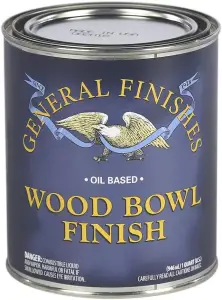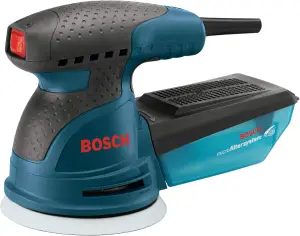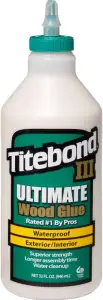Subscribe to Steve Ramsey – Woodworking for Mere Mortals on YouTube
In this blog post, we will show you how to make a simple cutting board out of wood. This project is perfect for beginner woodworkers, and it only requires a few basic tools and materials. Let’s get started!
Making an end-grain cutting board is fun and fairly simple. It takes an eye for detail and a little bit of planning, but it’s a fundamental woodworking project that anyone with a table saw can make. In this video, I’ll take you step-by-step through the entire process of designing and building a cutting board. The online software I used is a free site called Cutting Board Designer JS: https://ericu.github.io/CBDJS/cb.html
There are three types of wooden cutting boards:
The cheapest and most basic is a face grain cutting board. It’s simply a board, or maybe a couple boards edge joined together to make them wider. The thickness of a face grain cutting board is limited to the thickness of the lumber used to make it.
A step up is an edge grain cutting board. To make this, you glue the faces of a bunch of boards together and their edges become the cutting surface. From a durability standpoint, an edge grain board is about the same as a face grain board. The advantage though, is that you can easily make a much thicker cutting board. Of course, this will require more lumber.
But the most prized cutting board is the end grain cutting board. These are made up of lots of small boards with their faces and edges joined together, using the end grain of the boards as the cutting surface. These can sell for several hundred dollars or even several thousand dollars each, depending on the size. Like with the edge grain cutting board, you can make these as thick as you want. 1” to 2” thick boards are common, but you could even make a free standing butcher’s block. These are the most time consuming boards to make and require the most lumber.
What Is The Purpose Of The Cutting Board?
The cutting board is one of the most important tools in the kitchen. It is a flat surface on which you can chop, dice, and mince food. A good cutting board should be made of durable material that is easy to clean. It should also be large enough to accommodate all of your chopping needs.
There are two main types of cutting boards: wooden and plastic. Wooden cutting boards are the most popular type. They are durable and easy to clean. However, they can be more expensive than plastic cutting boards. Plastic cutting boards are less durable than wooden ones, but they are often cheaper.
How To Make a Cutting Board | Beginner Woodworking Project
Subscribe to 731 Woodworks on YouTube
Learn how to make a cutting board the easiest way possible. For these cutting boards you don’t need a jointer or a planer. This video is a step-by-step tutorial with everything you need to know about making a professional looking cutting board with domestic and exotic hardwoods. Cutting boards are a great beginner woodworker project.
Get your cutting board kit here: https://www.wtghardwoods.com
What Is The Best Type Of Wood For A Cutting Board?
When it comes to cutting boards, there are a few different types of wood to choose from. But which one is the best?
Here’s a quick rundown of the different types of wood and their pros and cons:
– Hardwoods like maple or cherry are dense and durable, making them ideal for heavy-duty chopping. However, they can be expensive and difficult to find.
– Softwoods like pine or cedar are more affordable and easier to find, but they’re not as durable as hardwoods.
– Bamboo is a popular option because it’s eco-friendly and easy on knives. However, it can be prone to warping and cracking.
So, which type of wood is the best for a cutting board? Ultimately, it comes down to personal preference. If you’re looking for durability, go with a hardwood. If you’re looking for affordability, go with a softwood. And if you’re looking for an eco-friendly option, bamboo is a good choice.
Cutting Board 101: How to Make a Cutting Board
Subscribe to Six Eight Woodworks on YouTube
What Is The Best Type Of Wood Finish For A Cutting Board?
There are several types of wood finishes that can be used on cutting boards, and the best type of finish to use depends on the type of wood the cutting board is made from. If the cutting board is made from hardwood, such as maple or oak, then a food-safe oil finish, such as mineral oil, should be used. If the cutting board is made from softwood, such as pine or cedar, then a beeswax and mineral oil finish should be used.
No matter what type of wood finish is used, it is important to reapply the finish regularly to keep the cutting board in good condition. A properly maintained cutting board will last for many years.
Making a Cutting Board in 20 Minutes
Subscribe to Make Something on YouTube
We get the stopwatch out for this build to show how quickly you can make one of these cutting boards in about 20 minutes. That is if you don’t count the time it takes for glue and finish to dry. 🙂
General Finishes Wood Bowl Finish, 1 Quart

Click Here To See The Price On Amazon
BOSCH ROS20VSK Palm Sander 2.5 Amp 5 in. Corded Variable Speed Random Orbital Sander/Polisher Kit with Dust Collector and Hard Carrying Case

Click Here To See The Price On Amazon
How Thin Can A Cutting Board Be?
You might be surprised to know that there is no definitive answer to this question. It really depends on what you plan to use your cutting board for and how thin you can safely go without compromising its function or safety.
With that said, let’s take a look at some of the things you need to consider before deciding on the thickness of your cutting board.
The first thing you need to think about is what you’ll be using your cutting board for. If you’re only going to use it for slicing fruits and vegetables, then you can probably go with a thinner board. However, if you’re going to be using it for chopping meat or other tougher tasks, then you’ll need a thicker board.
The second thing to consider is how thin you can safely go without compromising the function or safety of your cutting board. If you’re not sure, it’s always best to err on the side of caution and go with a thicker board.
How to Make a Cutting Board with Minimal Tools
Subscribe to MWA Woodworks on YouTube
Titebond III Ultimate Wood Glue, Quart

Click Here To See The Price On Amazon
DEWALT 20V Max XR Cordless Router

Click Here To See The Price On Amazon
What Is The Most Sanitary Type Of Cutting Board?
You would think that the most sanitary cutting board would be made of plastic, but studies have shown that wood is actually more sanitary.
The reason for this is that bacteria can actually penetrate the surface of plastic cutting boards, whereas bacteria cannot penetrate the surface of wood cutting boards.
Wood cutting boards are also more durable than plastic cutting boards. Plastic cutting boards can get scratched easily, which provides a perfect environment for bacteria to grow.
Wood cutting boards can be sanded down and refinished when they start to show wear and tear.



